By now, it’s simply accepted that planes fly in the sky and multi-ton vessels float at sea. But before you step foot on your next cruise, no one would fault you for wondering exactly how it is that these large cruise ships float in water.
To explain how cruise ships float, allow a quick lesson in the science of buoyancy.
Call to Book Your Next Cruise Now: 1-855-228-5584!
How Do Cruise Ships Float?
What is buoyancy?
But first, you may ask, What is buoyancy?. According to the Miriam Webster definition, buoyancy is “the tendency of a body to float or to rise when submerged in a fluid” or “the power of a fluid to exert an upward force on a body placed in it”.
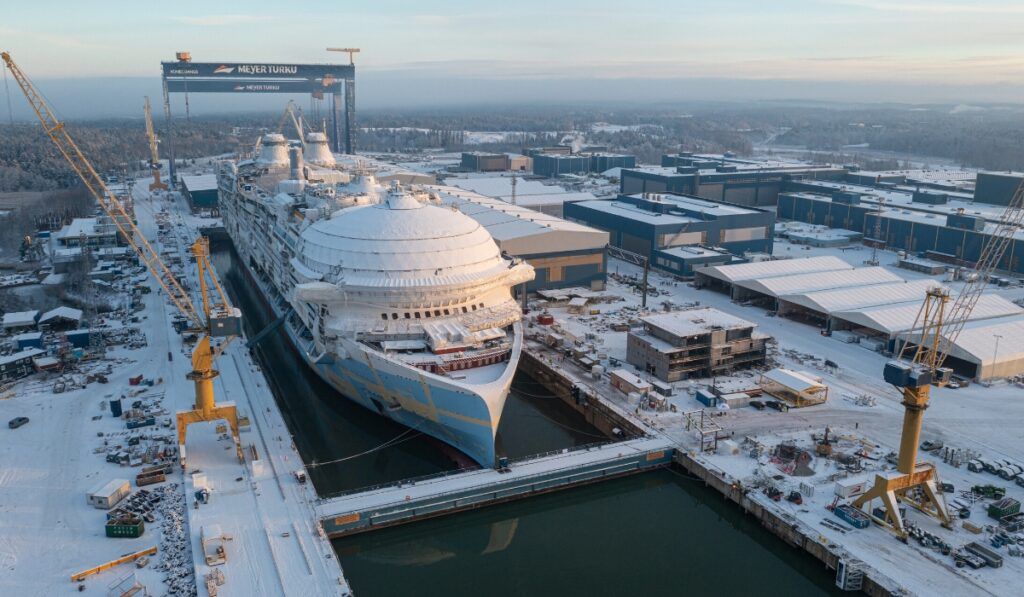
This seems pretty important when discussing some of the larger vessels of today, like the soon-to-be largest cruise ship in the world– Icon of the Seas. This massive vessel will measure in at over 250K gross tons when she debuts in January 2024. Given the size, it may seem quite impressive that these large cruise ships can float in water and that they don’t sink. But, it all comes down to science.
What makes a cruise ship float?
If something is denser than water, it sinks; if it is less dense than water, it will float. That is the basic principle behind the design of ship hulls and the idea of buoyancy and flotation. (If you’re looking to really research these laws of physics, look up “Archimedes’ Principle.”)
While these massive metal hulls supporting a dozen or more ship decks might seem extremely dense, they are engineered to trap air, with lots of empty volume, which makes them mostly hollow and actually less dense than the sea below.
The shape of the hull is also important. The size of the hull, including its beam and draft, actually helps displace water. Displacement causes a ship to be equal to or lighter than the water below and allows for flotation.
The upward force, or buoyancy, of water displaced around an object needs to counter its own mass. Therefore, the volume of water that a cruise ship hull can displace is carefully measured and taken into consideration in its overall design and weight.
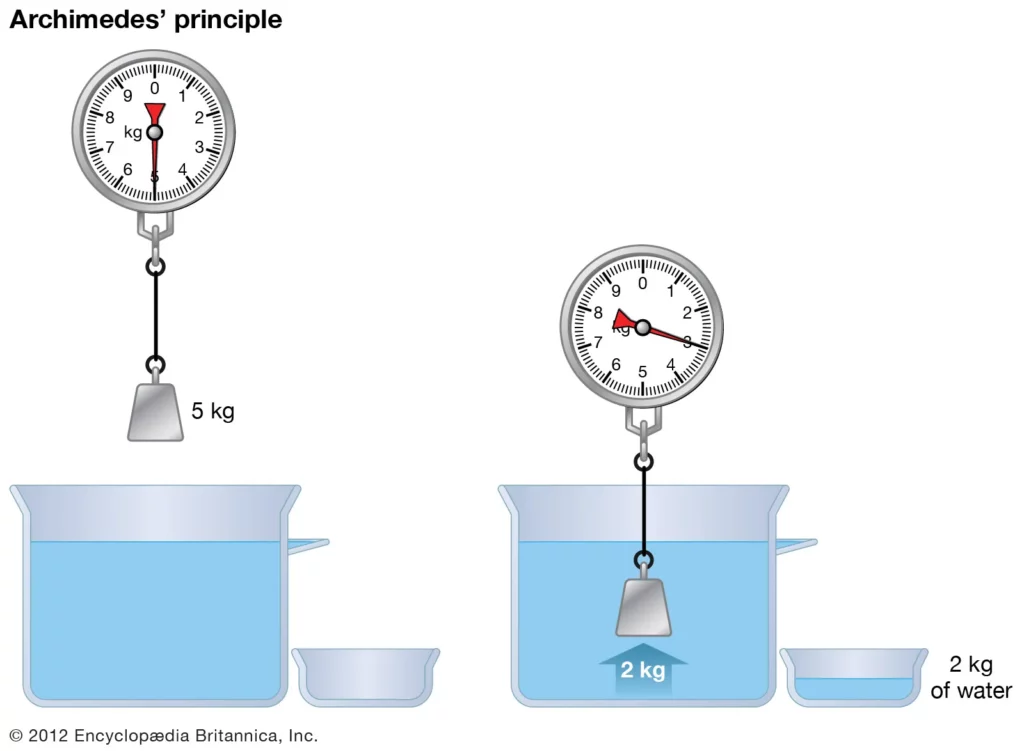
How often do cruise ships sink?
Given the precise calculations needed during cruise ship design and fabrication, you may wonder, How often do cruise ships sink?. Cruise ships sink very, very rarely.
With nautical disasters like the Titanic as part of popular culture, it might be hard to disassociate ships from the possibility of sinking, if you didn’t know any better. But luckily, modern engineering and advanced ship safety systems do know better. They can for the most part prevent a serious disaster from taking place at sea.
Ships sink when enough water enters the hull making it denser than the surface below. However, hulls are subdivided with individual watertight compartments and bulkheads, or walls dividing each section, which help prevent the leak from spreading to other compartments.
That being said, only 22 ships have sunk in the past 100 years, with most of those incidents in the first half of the 20th century — and very few in recent decades. Many of these accidents have been while berthed or being towed, with no passengers onboard and no loss of life. Other causes have involved mechanical failure, fog and collision, or negligence.
The Titanic sank in 1912 due to a significant breach in its hull from an iceberg. One century later, in 2012, the Costa Concordia became the largest maritime disaster in modern history when the ship hit a large rock due to negligence. Its captain was imprisoned for manslaughter in 2017 for an initial sentence of 16 years.
Since 2012, the only report of a cruise ship sinking with passengers onboard was a Chinese river vessel in 2015. It was caught in a storm and sank in waters just 50 feet deep.
BOOK NOW: Get Exclusive Deals on Your Next Cruise!
Comments
Have you ever wondered how cruise ships float? Do you have any other tidbits to explain this scientific principle to cruise passengers? Drop us an anchor below to share your thoughts on the engineering marvels that are cruise ships.

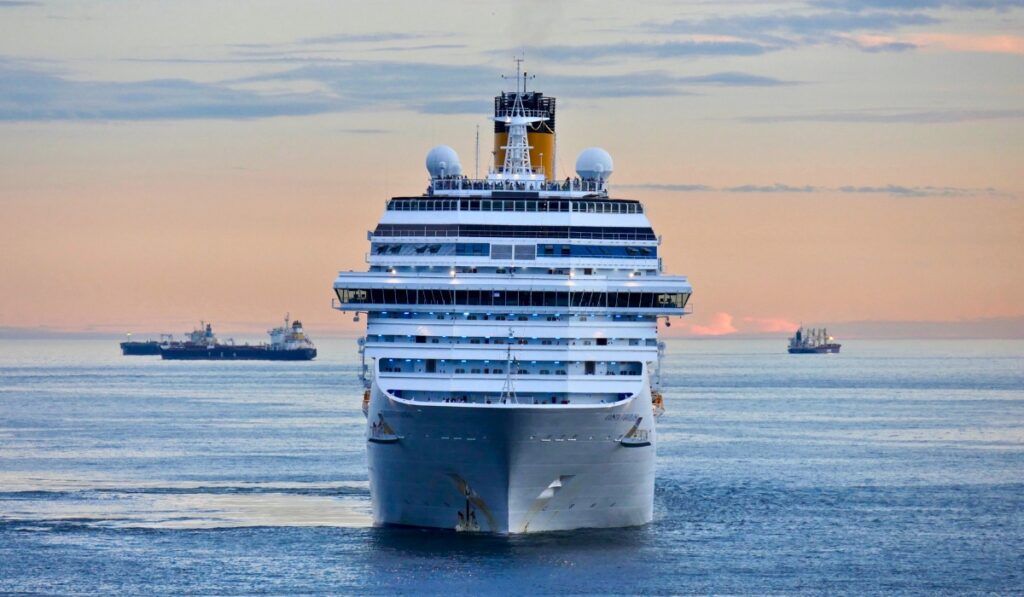


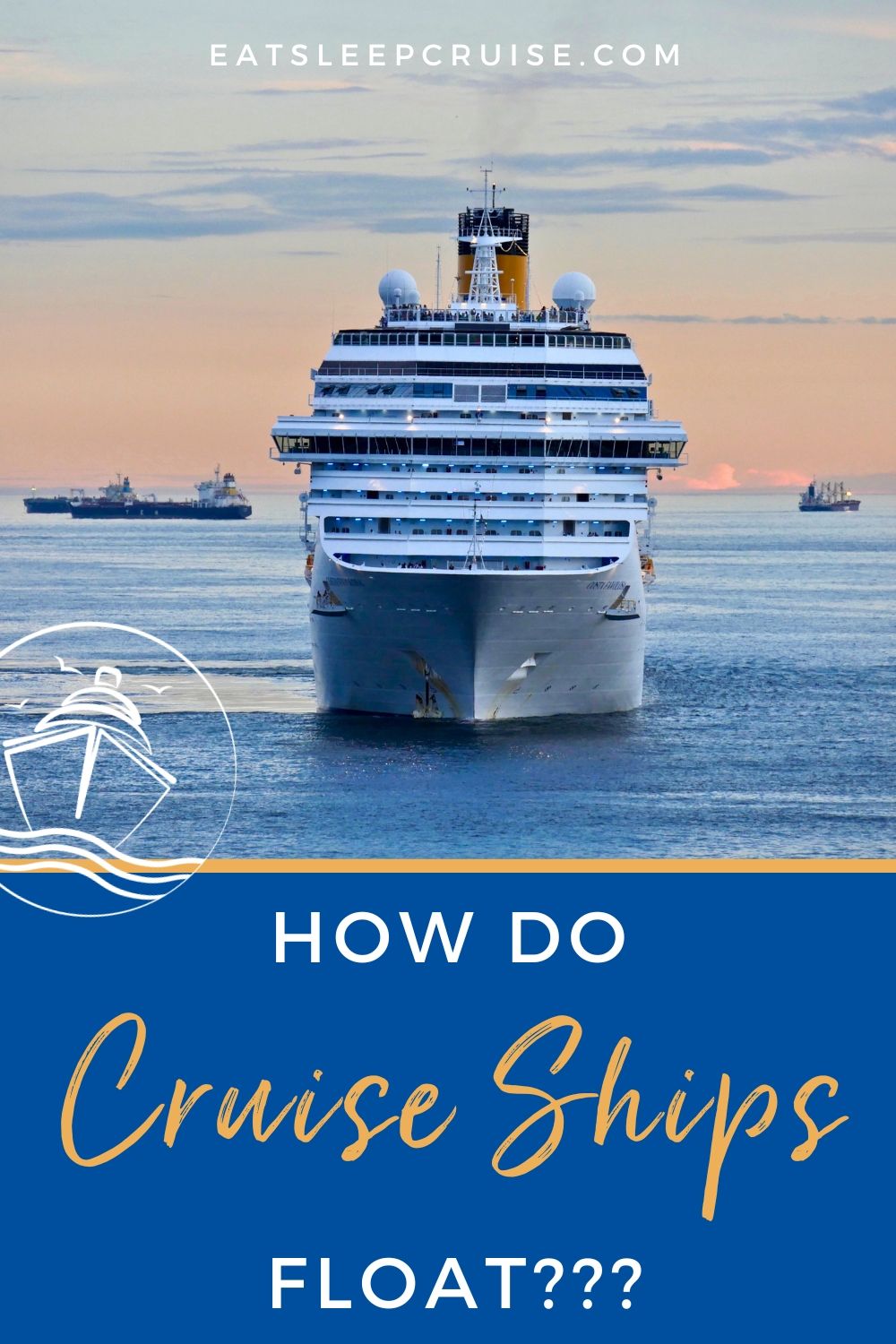
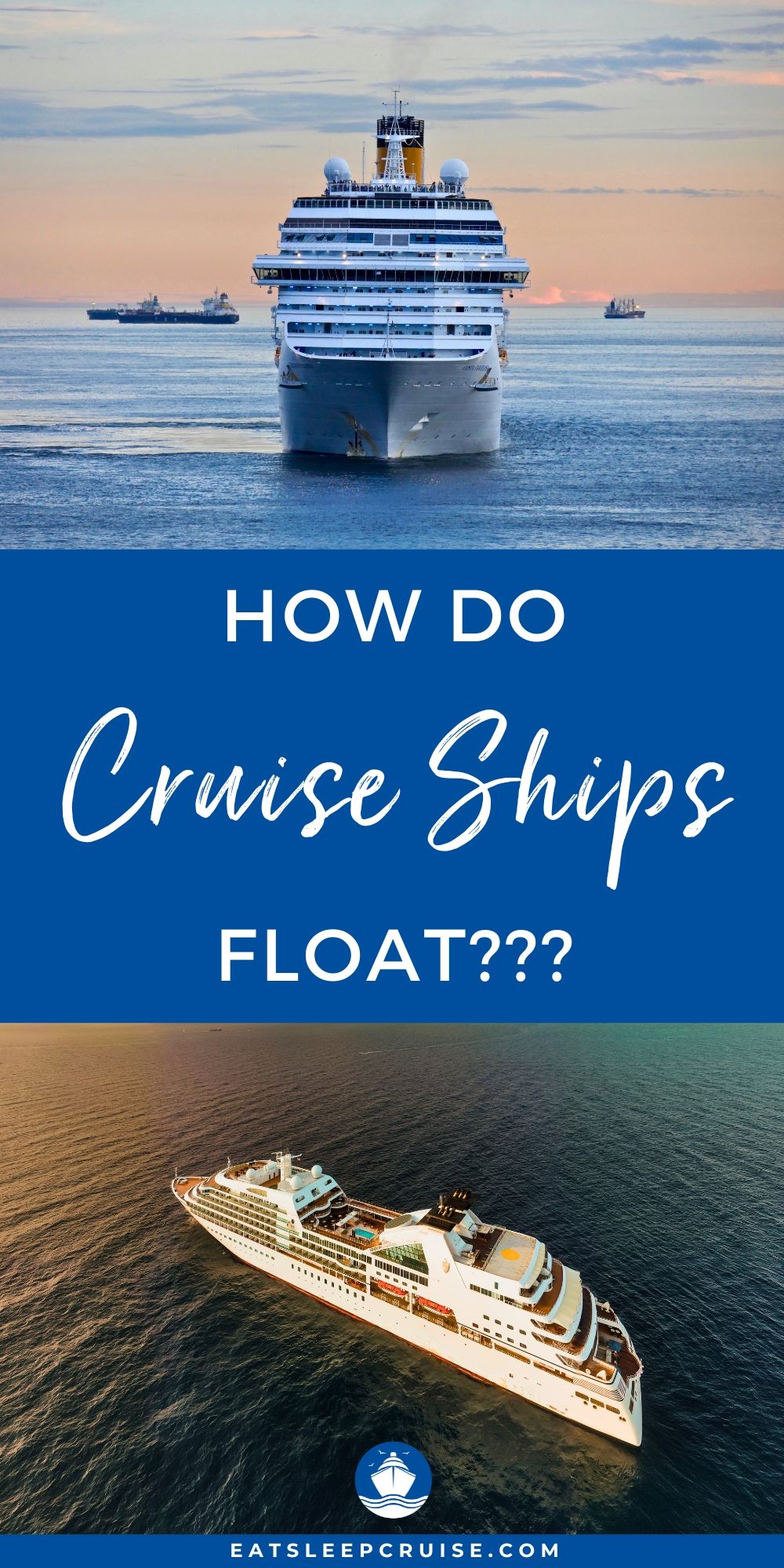



How Do Cruise Ships Float?
Be the first one to post comment